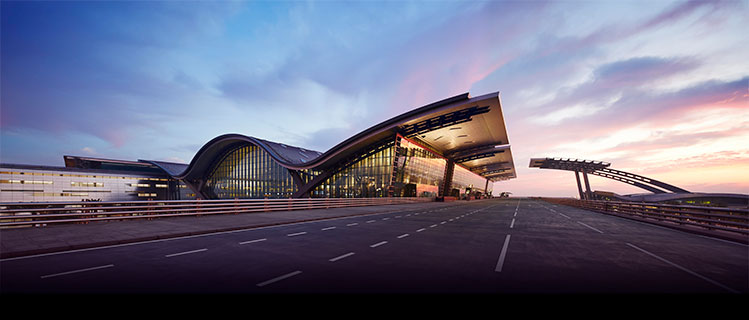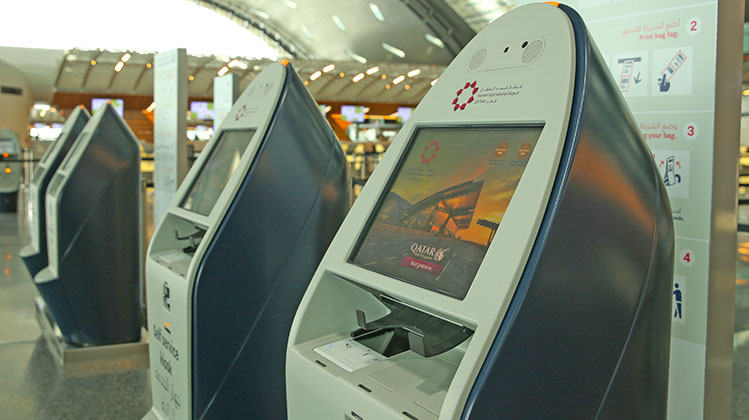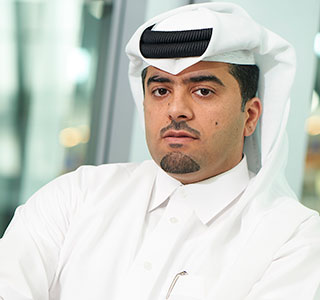Engr. Badr Mohammed Al Meer, COO Hamad International Airport, talks to Marta Dimitrova about the airport’s ambitions to “position itself as the gateway to Qatar, the Gulf and the world”.

Qatar has one of the fastest-growing economies in the world. The country is currently striving to boost its profile as a regional hub for tourism, culture, education, science and research, building a more diversified economy away from the hydrocarbons sector. “Hamad International Airport plays a major part in the equation and is positioning itself as the gateway to Qatar, the Gulf and to the world,” says Engr. Badr Mohammed Al Meer, COO Hamad International Airport (HIA).
Indeed, the airport’s strategic partnership with Qatar Tourism Authority (QTA) has boosted tourism through visa-free entry to nationals from a total of 80 countries, making Qatar the most “open country” in the region. HIA launched the +Qatar Stopover Programme in partnership with Qatar Tourism Authority and Discover Qatar, an initiative that promotes the country as a stopover destination. HIA and QTA also announced the opening of several tourism information centres and kiosks at the airport in a bid to ensure tourists and visitors enjoy a warm welcome and seamless visitor experience.
This year, Al Meer was appointed as a Regional Board Director of ACI Asia-Pacific, following his tenure as Special Advisor to the Board of ACI Asia-Pacific since 2017. “Joining the council gives me the opportunity to share experiences and exchange best practices with our industry leaders,” he comments. “It is also a significant distinction for Qatar’s air transport sector and reflects HIA’s international recognition. At a time which is critical for the aviation industry and the airports sector within it, I aim to contribute, at the Asia-Pacific level, towards the challenges we are facing, such as capacity, security, and the environment, and use our clear advantage of being part of a global organisation to act in an integrated manner. I look forward to collaborating with my peers in the years to come.”
Hamad Airport served 35.27 million passengers in 2017 with 3.8% increase in the second half of the year, after the initial drop in volume in June 2017, due to ongoing operational restrictions. The recovery from this initial downfall is also evident this year. In Q1 2018, the airport handled 8.72 million passengers, 52,244 aircraft movements, and 514,299 tonnes of cargo. “The growing number of passenger and cargo operations this year is testament to our resilience and sustainable airport operations since the blockade,” says Al Meer.
The airport welcomed several new airlines in 2017, including SalamAir, Wataniya Airways, Jazeera Airways, Regent Airways, US-Bangla Airlines, and IndiGo, while Qatar Airways accelerated its global expansion with the launch of 10 new destinations, all to encourage and promote tourism and travel in Qatar, as well as bring passenger growth to the region.
‘Smart Airport’ vision
As one of the most advanced airports in the world, HIA has adopted a user-centric approach driven by the ambition to become the “airport of the future”. Cutting-edge technolog ies have been implemented to secure a highly-personalised, connected and hassle-free passenger experience from arrival and transfers, to boarding, achieving minimal and seamless connection times with the ultimate goal to empower passengers at every step of the journey. “HIA aims to bring the best-of-breed technologies and innovative solutions,” Al Meer explains. “The introduction of automated processes and self-service at every touchpoint on the travel journey will facilitate faster passenger movement within the terminal, while complying with the highest standards for service quality, security and safety. We have a very ambitious programme ahead facilitated by HIA’s strategic partnerships with technology experts SITA and Huawei, to name just two. In this regard, we are the only airport in the SITA club working on a four different touchpoints strategy for using biometrics integrated into the self-service processes of check-in, bag drop, security screening, and aircraft boarding for all travellers. The idea behind the use of biometrics is to enhance security while delivering smooth end-to-end travel using a single biometric token. We are also working together with companies like Huawei to co-create innovative concepts, prototypes and solutions using cutting-edge technologies, particularly in the areas of IoT [Internet of Things] and autonomous machines.”

Hamad International Airport has adopted next-generation self-check-in kiosks, which enable passengers to check-in, and print their boarding passes and bag tags, as part of its ‘Smart Airport’ vision.
Moreover, the airport will soon be launching 62 self-check-in kiosks and bag drop kiosks which are biometrics enabled.

Engr. Badr Mohammed Al Meer, COO Hamad International Airport: “HIA will aim to bring the best-of-breed technologies and innovative solutions. The introduction of automated processes and self-service at every touchpoint on the travel journey will facilitate faster passenger movement within the terminal, while complying with the highest standards for service quality, security and safety.”
The next step for HIA as part of its user-centric ‘Smart Airport’ programme will be to commence new trials aimed at evaluating the effectiveness of robotics for passenger facilitation, and of blockchain technology for rapid and secure sharing of data across multiple stakeholders. “We will also explore the potential use of augmented reality and virtual reality for operational concepts. Some airlines are already using this technology for inflight entertainment and we are interested in how the technology can be used on the ground.”
HIA is also preparing for Qatar’s hosting of the 2022 FIFA World Cup, when it is expecting to serve 96,000 passengers per day at peak times. “Our future ambitions, will focus on building lasting dividends after the World Cup. It will be an opportunity to showcase the local culture to the world. Millions of fans will be flying in and out of HIA, taking with them a lasting impression. The World Cup will also bring significant economic value by providing an opportunity to create lasting business relations and a climate for investments and tourism growth,” Al Meer concludes.







